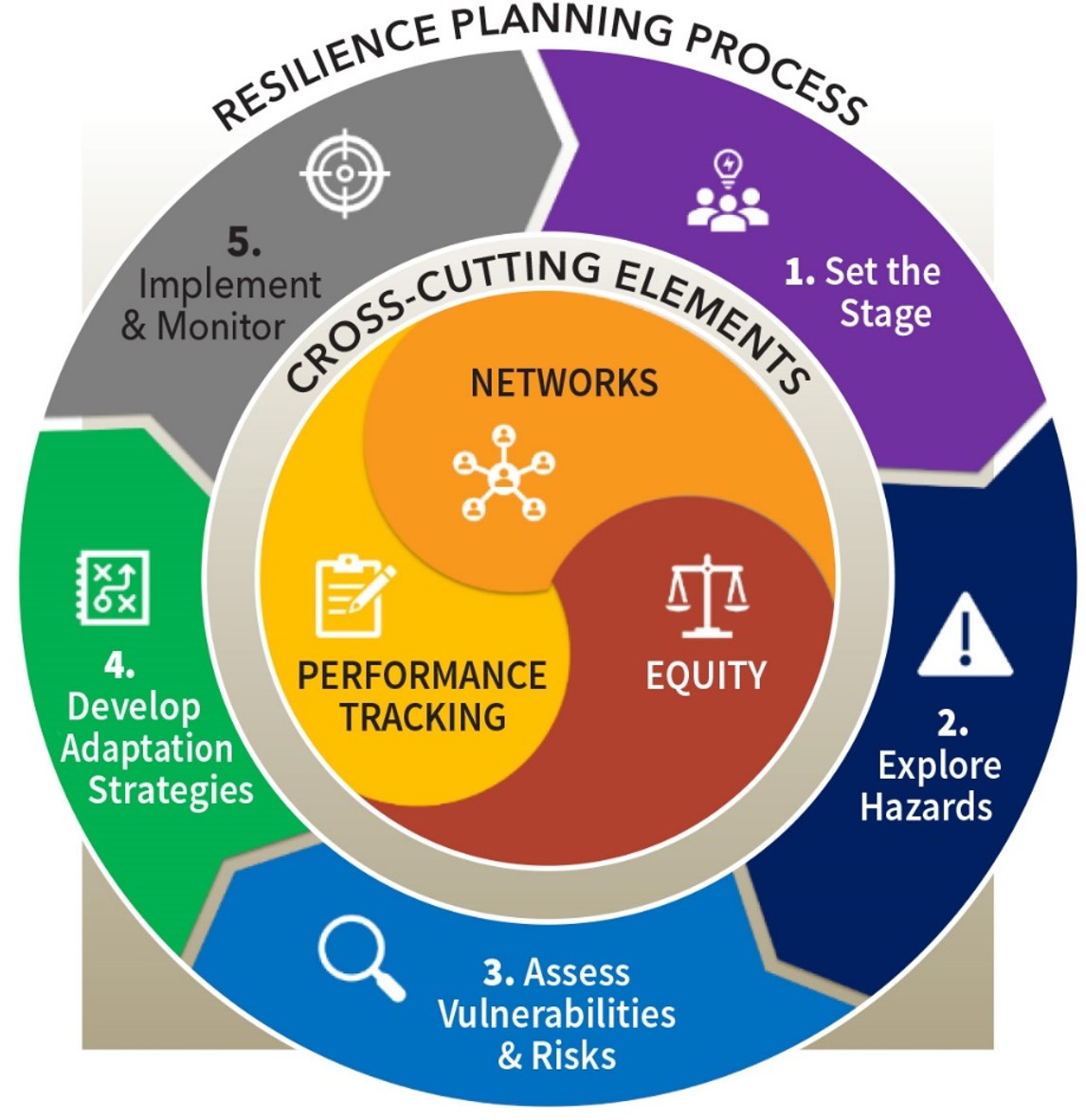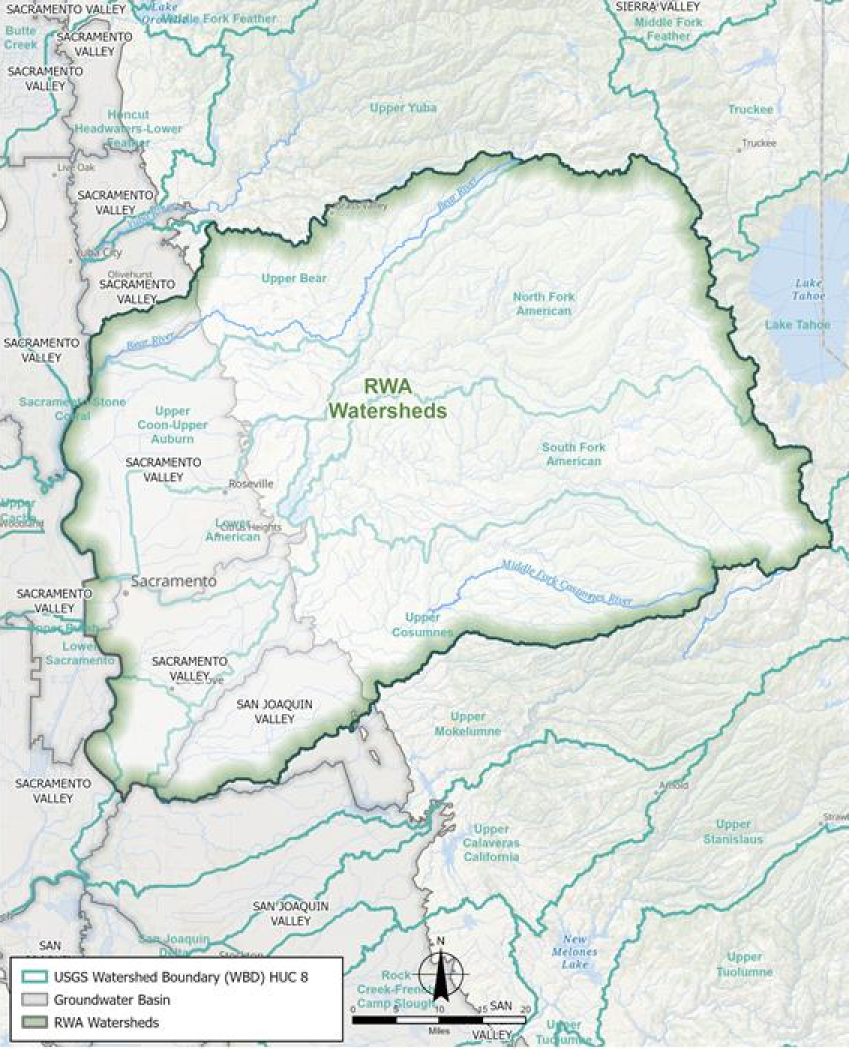By Ryan Ojakian, Regional Water Authority
The Watershed Resilience Pilot has reached a key milestone with the completion of a gap analysis reviewing more than 70 studies across the American, Bear, and Cosumnes watersheds. This work sets the stage for a detailed vulnerability assessment that will guide strategies to prepare the greater Sacramento region for climate impacts.
Launched by the Regional Water Authority (RWA) with support from the Department of Water Resources (DWR), the Pilot is one of five statewide pilots that are testing a new approach to water supply resilience planning. This approach expands both the geographic scope and the range of stakeholders, taking a “megashed” view that connects multiple watersheds—from headwater forests and foothill towns to groundwater basins and urban centers.
Completing the gap analysis keeps the Pilot on track to deliver the Watershed Resilience Plan in 2026 and positions the Sacramento area to be ready to pursue Proposition 4 funding. That funding—$100 million statewide for watershed resilience—is crucial to supporting a pipeline of projects that can strengthen resilience to droughts, flooding, warming temperatures, and wildfires.
Creating a Climate-Resilient Megashed
Back in 2022, the DWR designed the Watershed Resilience Program to advance climate adaptation at a watershed scale. Recognizing our diversity and proven leadership in collaborative watershed management through venues such as the Water Forum, DWR chose the Sacramento region as one of five pilot projects across the state.
The Watershed Resilience Pilot represents a next-generation planning framework—building on California’s Integrated Regional Water Management (IRWM) tradition and expanding the scope beyond the American River “supershed” to the full “megashed.” The Pilot is envisioned to broaden partnerships, evaluate the region’s greatest climate vulnerabilities, and develop a portfolio of adaptation strategies that deliver multiple benefits.
As part of this effort, the Pilot is examining nine interconnected systems that are affected by climate and weather: ecosystem, flood management, groundwater supply, hydropower, surface water supply, agriculture, recreation, water quality, and community and equity. The focus is on strategies that benefit multiple systems at once and that address the most vulnerable assets and communities.
Identifying Gaps

The gap analysis identified what is already known and where more information is needed. It reviewed reports such as groundwater sustainability plans, water management plans, flood protection plans, local hazard mitigation plans, basin-wide studies, and many others. The review also incorporated Water Forum studies to build on the more than two decades of collaborative science and planning for the lower American River.
The review confirmed a strong baseline of information, particularly for water supply and flood management, but also revealed important gaps: Less is known about how hydropower and agriculture will respond to climate impacts. The American River watershed has been studied more extensively than the Bear and Cosumnes, and more work is needed to understand how climate change will affect underserved communities.
This foundation will guide technical analyses, including cutting-edge modeling of future climate change scenarios, to close information gaps.
What’s Next for the Watershed Resilience Pilot
The project team is now conducting a comprehensive vulnerability assessment across the megashed. This fine-grained assessment evaluates the vulnerability of specific components in each watershed—for example, snowpack in the Upper American or levees on the Cosumnes.
Each component is assessed based on its exposure to climate hazards such as drought, flooding, wildfire, and rising temperatures, its sensitivity to those hazards, and its existing adaptive capacity. The greater the sensitivity and lower the adaptive capacity, the higher the vulnerability. This process will help establish priority actions based on the components most at risk.
The next phase will involve identifying adaptation strategies and projects for inclusion in the Watershed Resilience Plan.
DWR has emphasized that regions further along in planning will be better positioned to compete for Proposition 4 funding. Progress to date, supported by the collaboration of local agencies, NGOs, community partners, and Water Forum members, strengthens the region’s ability to attract the resources needed to put resilience strategies into practice.
To learn more about the project and get involved, visit https://rwawatershedsresilience.com/.
Ryan Ojakian is the Manager of Government Relations for the Regional Water Authority.

